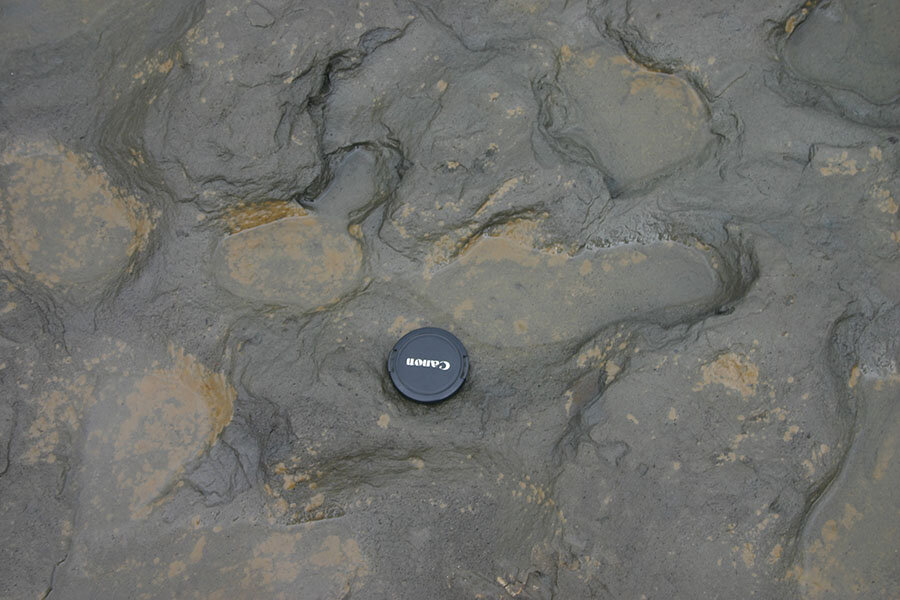On an English beach, 800,000-year-old footprints
Loading...
The earliest known humans in northern Europe have left evidence of their existence on an English beach, in the form of footprints.
A team of scientists from the British Museum, Britain's Natural History Museum, and Queen Mary University of London have discovered a series of 800,000-year-old footprints left by early humans in the ancient estuary muds at the Happisburgh site, an excavation site known for preservation of sediments containing ancient flora and fauna, in Britain's Norfolk Coast.
Scientists spotted at least 12 clear footprints, Nick Ashton, a curator at the British Museum, told the Monitor.
"At first we weren’t sure what we were seeing," says Dr. Ashton, "but as we removed any remaining beach sand and sponged off the seawater, it was clear that the hollows resembled prints, perhaps human footprints, and that we needed to record the surface as quickly as possible before the sea eroded it away."
Over the following few weeks, scientists studied the prints, using 3D images and photogrammetry, a technique that can be used to take measurements from photographs. The analysis of this image "confirmed that the elongated hollows were indeed ancient human footprints, perhaps of five individuals," according to a press release from The British Museum.
These footprints are the oldest evidence of human footprints outside Africa, Ashton told the Monitor.
Further analyses revealed that the imprints belonged to adults and children who were heading south, say scientists. Scientists could even identify heel, arch and toes in some. "In some cases we could accurately measure the length and width of the footprints and estimate the height of the individuals who made them," said Isabelle De Groote from Liverpool John Moores University, who studied the footprints, in a press release from the British Museum.
"In most populations today and in the past foot length is approximately 15 percent of height. We can therefore estimate that the heights varied from about 0.9 m to over 1.7 m. This height range suggests a mix of adults and children with the largest print possibly being a male," she said.
Based on the site where these footprints were found, scientists are predicting that the footprints must be thousands of years old. "Although we knew that the sediments were old, we had to be certain that the hollows were also ancient and hadn’t been created recently, " said Simon Lewis, a geoarchaeologist at Queen Mary University of London. "There are no known erosional processes that create that pattern. In addition, the sediments are too compacted for the hollows to have been made recently."
These prints probably belong to the Homo antecessor ('Pioneer Man'), says Ashton.
Based on the analysis, Chris Stringer, Merit Researcher at the Natural History Museum London UK, said that it is very much possible that "the humans who made the Happisburgh footprints may well have been related to the people of similar antiquity from Atapuerca in Spain, assigned to the species Homo antecessor ('Pioneer Man')."
"These people were of a similar height to ourselves and were fully bipedal. They seem to have become extinct in Europe by 600,000 years ago and were perhaps replaced by the species Homo heidelbergensis. Neanderthals followed from about 400,000 years ago, and eventually modern humans some 40,000 years ago," Dr.Stringer added.
Unlike fossils, it is rare for footprints to survive over a period of time. Other older footprints have been discovered in Laetoli, Tanzania that are 3.5 million years old and at Ileret and Koobi Fora in Kenya at about 1.5 million years are more ancient.
The findings have been published in a paper titled "Hominin Footprints from Early Pleistocene Deposits at Happisburgh, UK" in the open-access journal PLoS ONE.





